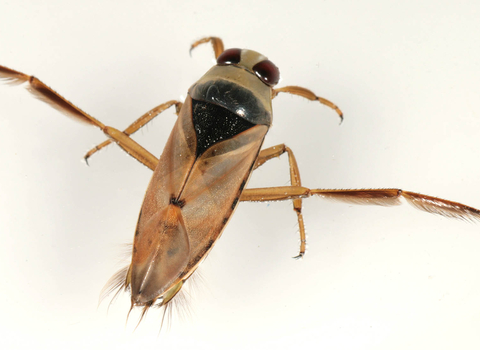
Common Backswimmer ©Malcolm Storey
Common backswimmer
The fearsome common backswimmer hunts insects, tadpoles and fish. It uses its oar-like legs to swim upside-down under the water's surface where unsuspecting prey can be found.
Enw gwyddonol
Notonecta glaucaPryd i'w gweld
January to DecemberGwybodaeth am rywogaethau
Ynghylch
The common backswimmer is widespread and common in ponds, ditches and canals across the UK. It can swim upside-down through the water, often near the surface where it grabs insects that have fallen into the water film. It is an active and voracious predator, hunting many smaller invertebrates, tadpoles and small fish. Sensing the vibrations of its prey, it charges at it with lightning speed and stabs it with its 'beak', injecting toxic saliva into the wound so it can suck out the contents of the body. Common backswimmers mate between December and May, laying eggs from February onwards. The larvae go through a number of moults before reaching adulthood.Sut i'w hadnabod
The common backswimmer is light brown with large, reddish eyes. It has powerful, oar-like hind legs, which it uses as paddles when it swims upside-down. Its body resembles the shape of a boat. It may have a silvery appearance due to trapped air bubbles on its lower surface, which allow it to breathe.Lesser water boatmen (commonly referred to as water boatmen) look similar to common backswimmers, but they swim on their front and tend to spend less time at the surface.
